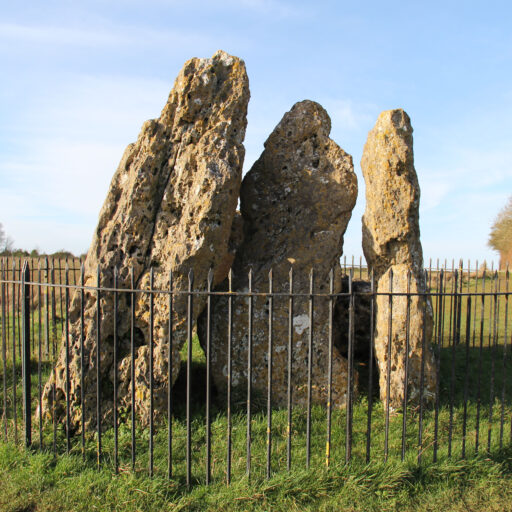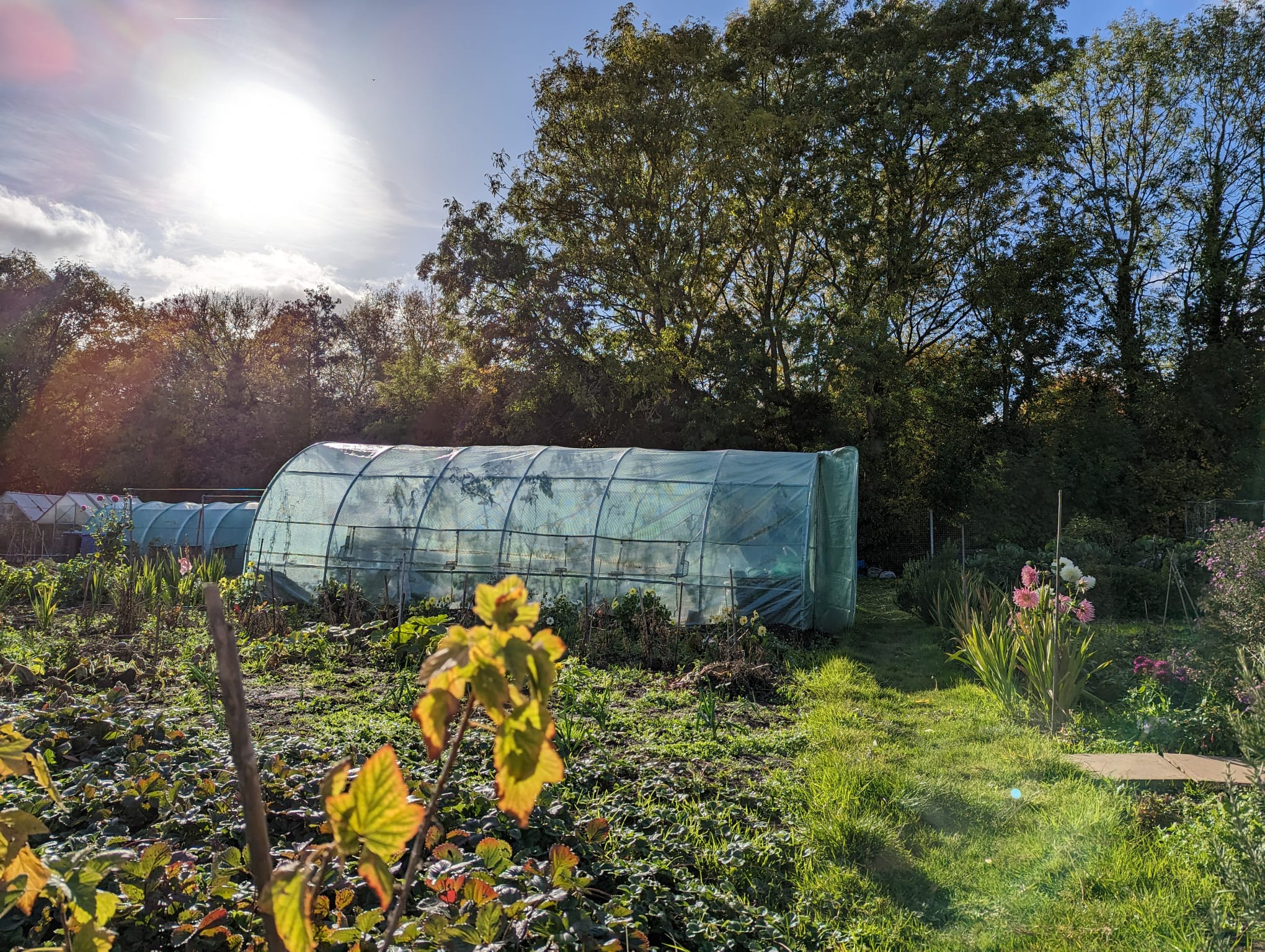After a somewhat planned, but longer than expected hiatus from creating any sort of long format content, I thought it was finally time to get back to it. To be completely honest, I had fallen out of love. Not just with writing and making videos, but the allotment as a whole. I found my mindset had changed later in the year and every visit to the allotment had become a chore. It wasn’t my number one priority now like it had been earlier in the year. With my day-to-day job and trying to set up my own business, something had to give. Regrettably, it was the upkeep of the allotment.
On reflection, for how busy we have both been with work and our business, the allotment could be much worse. I will say I am disappointed in how it currently looks, but we have already started preparing for the new season. With a new season and year, comes a renewed sense of purpose down on the plot.
I thought it would be good to reflect on how 2022 has been.
January is slow month for us. We popped in once a week to check on the allotment and polytunnel, just to keep things ticking over. Sweet peas were sown in anticipation of Spring. Our autumn planted garlic and onions were growing well. The rest of the plot was turned over and gypsum added to the soil.


Spring slowly awakens in February and there are splashes of colour everywhere; crocus and woodland primroses are in bloom all over the plot. There were more seeds to be sown and weeds to be composted. The rhubarb was the first crop to show itself.


We planted the first lot of potatoes and onions in March in hopes of an early harvest. A lot of our seed propagation was done at home with our windowsill propagator. Also, due to our work schedules, trips to the plot were few and far between during this month.



In April, we decided to create a new path on our original plot. This helped the layout of both of the plots flow better. The path was lined with woodland primroses rescued from my old neighbour’s garden, along with some of the elder branches that had been cut off our elder tree [by the house behind]. We also planted some more potatoes at Easter, for harvest later in the year. The first tomato plants were almost ready for planting in the polytunnel.

May was a glorious month on the plot. Summer was on the tip of our tongue and flowers were blooming across the plot. The bees were certainly being kept busy, as was I. There were lots of seedlings to be potted on and planted out. The latter was made harder by just how dry this month was.

By June, it was the polytunnels time to shine; tomatoes, cucumbers and chillies were ready to be planted in the raised beds inside. Any excess tomato plants were planted outside, these were mostly the Divinity F1 blight resistant variety. As you may already be aware, I’m a big heritage tomato lover. The only problem is, every single year we get blight. It is almost like clockwork, so having this variety outside is my only exception to the rule.


The peppers were plenty and the tomatoes weren’t far behind. The July days were so dry, so watering was the biggest task this month. The waterbutt had long run dry of rainwater, but luckily there is a mains connection on our allotment site.



As expected, we were drowning in tomatoes by August. We had grown no less than 14 varieties! Preserving the harvest was the biggest task of this month. Our fruit harvests were very mixed, whilst our Katy apple and Conference pear trees had their best harvest to date, the Victoria plum and the Russet apple tree didn’t even fruit. Our summer raspberries had been fantastic, Glen Coe was the best preforming variety. Although what I thought would have been a bumper harvest year for gooseberries and blackberries, it turns out that almost all the fruit dropped off before ripening.




September is a beautiful month on the plot, you can see the months of hard work come to fruition. But, this is where I began to find myself stepping back and not keeping the allotment in a state I found to be suitable. All I did was go to the allotment to harvest and water. I didn’t even take the time to sit back and enjoy what we had created. Once again, we had let our day-to-day jobs get in the way of this. It wasn’t just my day-to-day job taking up my time, but the process of setting up my own business took most of the free time I had outside of work.




By October our squashes were ready for harvest, and I must say it was a disappointing one. We harvested less than 10 in total, although I will assume it was the extremely hot summer that at hindered the harvest. We had grown two new varieties this year; Blue Hubbard and Tromboncino. Alongside the classic orange pumpkin and butternut squash. My one regret is not growing Crown Prince Squash and Uchiki Kuri, both fantastic squashes to grow and they store very well. Alas, every year is a learning curve and sometimes it is best to stick with what you know. Blight finally caught up with us, although it was much later than in previous years. The autumn fruiting varieties of raspberries didn’t yield as much as their summer fruiting counterparts.



With autumn being so mild, the dahlias just held on until the middle of November until finally going to seed. The polytunnel sat abandoned with half dead tomato and cucumber plants. We barely visited the plot during November. With our work schedules and with going to sell our chutneys at market, the allotment really took a backseat this month.


I harvested the last of the chillies at the beginning of December; before I knew it three weeks would pass before I would visit again on the winter solstice. I knew I needed to find a balance between upkeeping the allotment and my business, as the allotment is an integral part of my business. After spending the winter solstice on the plot, I realised what I had missed. I realised what we had been missing out and pushing aside for the sake of overtime at jobs that we don’t want to be our lives. We were so caught up in the day to day of life, that we had forgotten our long term goals of self-employment and self-sufficiency. Whilst taking time away from the allotment was somewhat of a necessary evil so that we had some time to set up our preserves business, we most certainly could have been more thrifty with the time we had.




Half of the plot has been refreshed and turned for the year. The gypsum has been added and will soak into the soil over the winter. The polytunnel has been stripped of all dead plants, whilst the raised beds inside have been refreshed and are ready for the tomato plants in six months time. Garlic has already been planted, with even more to plant. Garlic is traditionally planted on the shortest day and harvested on the longest day. The other half of the plot will need turning over and weeding, but all in all there isn’t that much to do in order to get ready for the start of the season.

I think in my time away and with the sparse visits to the plot, I had built up some sort of fear of the allotment. In my head it was a mammoth task that lay ahead of us, something we would never be able to do in time for the start of the season; when in actual fact it is nothing we can’t get sorted in a couple of weeks.
I can already feel that 2023 will be a good year. We are already beginning to lay the foundations for it. I hope to see you again in 2023.

